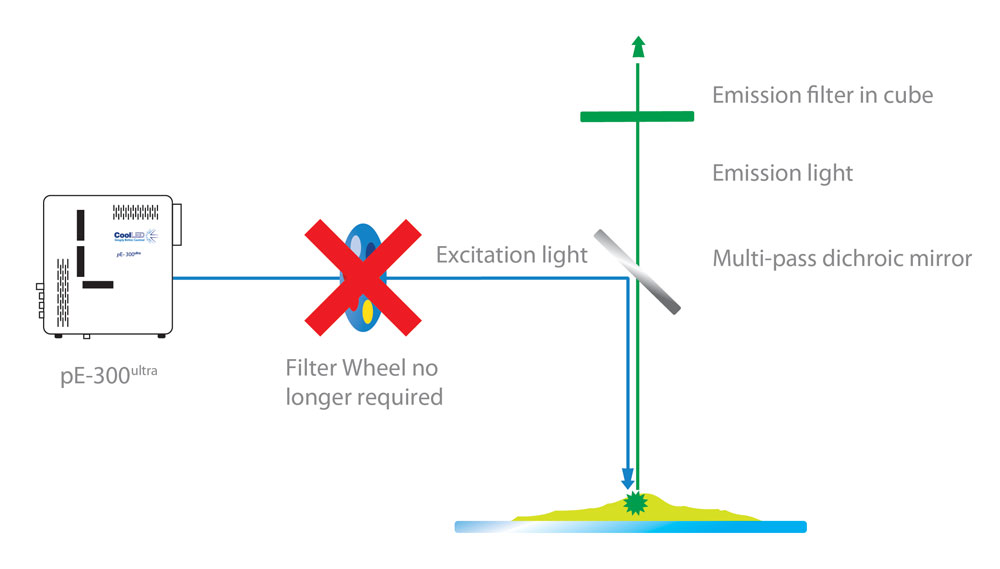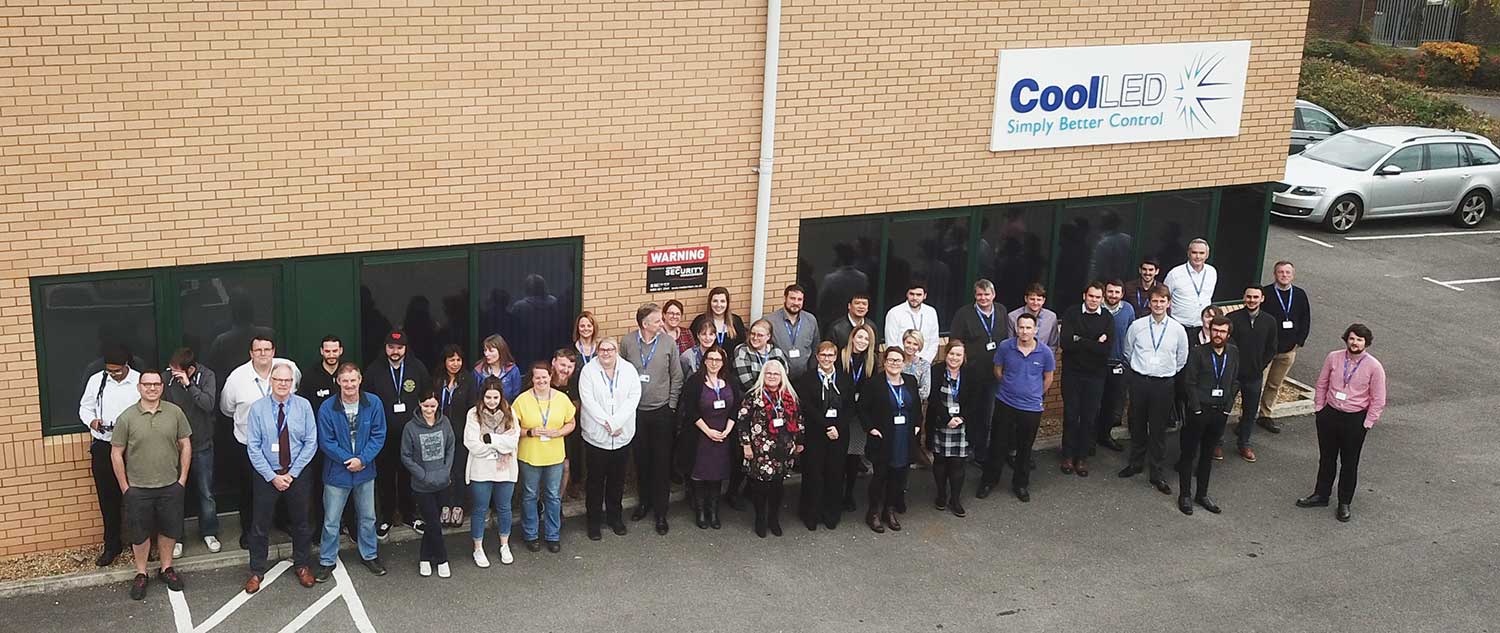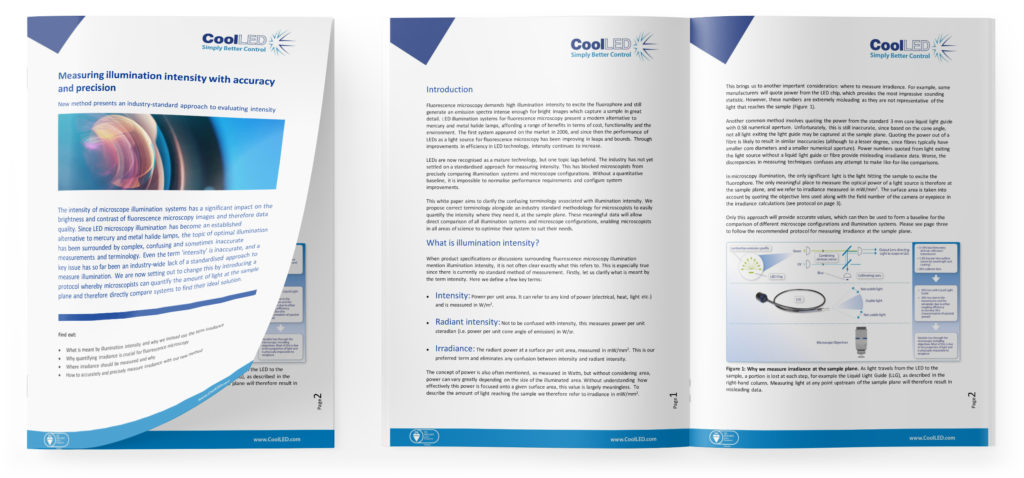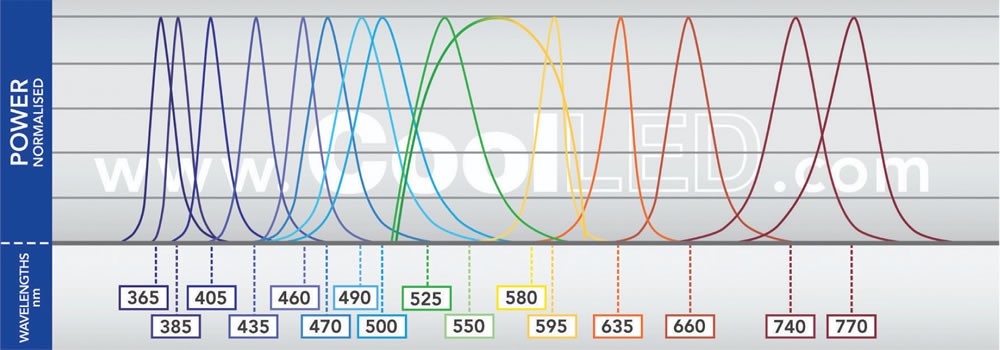The solid-state nature of microscope LED light sources opens the way to an unprecedented level of control, which has had more impact on acquiring the perfect image than we could ever have imagined. Microscope LED light sources can be switched on and off with precise microsecond timing, which removes the need for a mechanical shutter and improves the temporal resolution of experiments for capturing high-speed events.
Some microscope LED light sources combine discrete wavelengths to produce white light, for example the CoolLED pE-300lite for everyday fluorescence imaging, and the pT-100 WHT for transmitted light applications. These can present a cost-effective option, and irradiance can still be precisely controlled in 1% steps (0-100%), allowing the illumination to be optimally matched to the experiment, balancing brightness while protecting against photobleaching and phototoxicity.
More advanced microscope LED light sources which feature individual channel control of LED wavelengths have many benefits in fluorescence imaging, as the system can be set to illuminate only the desired wavelength peaks matching a particular fluorophore’s excitation spectrum, increasing the signal to noise ratio and improving image contrast. This can be further enhanced with excitation filters, and some microscope LED light sources such as the pE-300ultra allow inline excitation filters. This is ideal for high-speed imaging applications, replacing the latency and expense of a filter wheel.
Other features to look out for are USB control and software integration, which allows the microscope LED light source to be seamlessly controlled via imaging software for convenience and speed. For high-speed imaging applications, TTL control is vital, allowing the microscope LED light source to be triggered by a TTL-out on a device such as a scientific camera. With speeds as fast as 7 µs, such high-speed synchronisation enables the highest temporal resolution while also vastly minimising phototoxicity and photobleaching.
 Comparing Microscope LED light sources: Light delivery
Comparing Microscope LED light sources: Light delivery
CoolLED is also the only company to provide direct fit products as an alternative to light delivery using a liquid light guide. This is the most efficient means of light delivery to a microscope and is our most popular type of microscope LED light source. It harnesses more power, while also reducing total cost of ownership thanks to fewer consumables. Liquid light guide delivery is available for microscope LED light sources which must be placed remotely from a microscope, for example outside of a Faraday cage. For some of our microscope LED light sources, fibre-coupling is also possible.
Comparing Microscope LED light sources: Support
We are renowned for customer commitment and offer local support through our global network of resellers and our Global Sales Team, which means there is always an expert available to help.
Our microscope LED light sources are renowned for their reliability, but our support goes beyond this and we pride ourselves on friendly and expert advice whenever it is needed. You will also be covered by our market-leading warranty, which includes three years as standard for all products and a 12 month in-for-out swap if we cannot fix an issue.

Try it out!
If you’re interested in seeing how a microscope LED light source can enhance your microscopy illumination, we can provide a free loan unit for testing, with no obligation to purchase. Please contact us at [email protected] for more information.


 Comparing Microscope LED light sources: Light delivery
Comparing Microscope LED light sources: Light delivery
